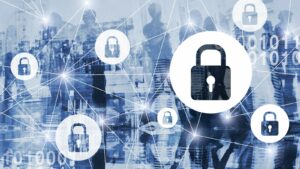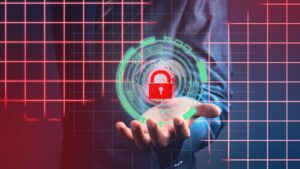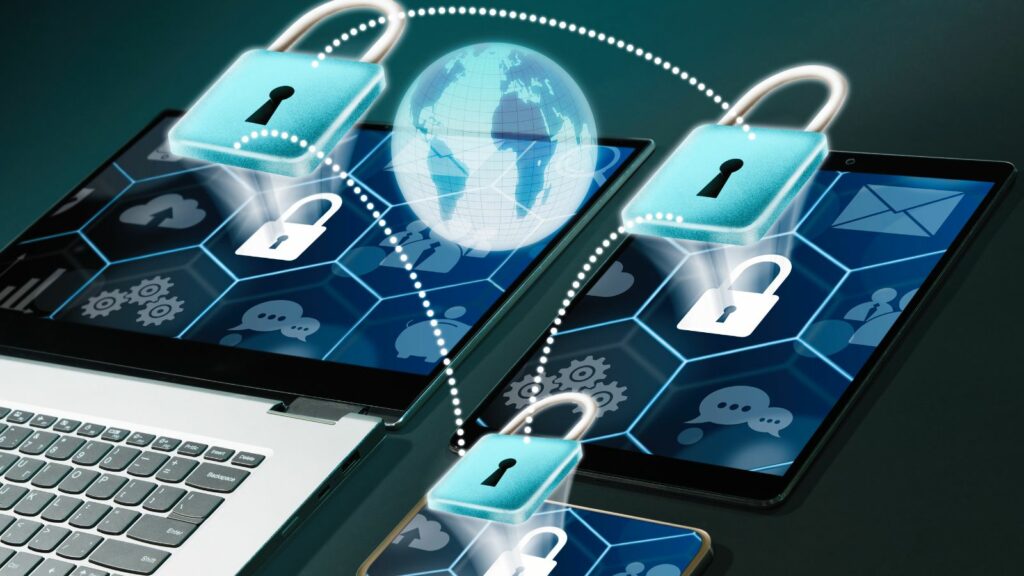Key Takeaways
- Cybersecurity Essentials: Recognizing the importance of cybersecurity is vital for protecting sensitive information against evolving cyber threats.
- Core Concepts to Understand: Familiarity with key principles such as risk assessment, strong password practices, multi-factor authentication, and data encryption is crucial for online safety.
- Stay Aware of Threats: Being informed about common cyber threats like malware, phishing, and ransomware helps individuals and organizations enhance their security measures.
- Implement Best Practices: Adhering to strong password policies, performing regular software updates, and providing continuous employee training are foundational strategies for effective cybersecurity.
- Utilize Key Security Tools: Utilizing antivirus software, firewalls, and encryption techniques are essential for safeguarding digital assets and ensuring a robust security posture.
In today’s digital landscape, cybersecurity isn’t just an option; it’s a necessity. With cyber threats evolving daily, individuals and businesses must prioritize their online safety to protect sensitive information and maintain trust. Understanding the essentials of cybersecurity can make the difference between a secure environment and a potential disaster.
From recognizing phishing attempts to implementing strong password practices, mastering these fundamentals empowers users to navigate the internet confidently. As cybercriminals become more sophisticated, staying informed about the latest security measures is crucial. This article delves into the core principles of cybersecurity that everyone should know, ensuring a safer online experience for all.
Cybersecurity Essentials
Understanding cybersecurity essentials involves recognizing key concepts that help individuals and organizations safeguard digital assets. These fundamentals include the following:
Risk Assessment
- Risk assessment identifies potential threats to sensitive information.
- Risk assessment evaluates vulnerabilities in systems and processes.
- Risk assessment prioritizes security measures based on potential impacts.
Strong Password Practices
- Strong passwords incorporate a mix of uppercase, lowercase, numbers, and symbols.
- Strong passwords avoid easily guessable information, like birthdays or common words.
- Strong passwords should change regularly to mitigate unauthorized access.
Multi-Factor Authentication (MFA)
- MFA adds layers of protection by requiring additional verification methods.
- MFA often includes a password plus a one-time code sent to a mobile device.
- MFA significantly reduces the risk of account breaches.
Phishing Awareness
- Phishing awareness emphasizes recognizing deceptive emails or messages.
- Phishing awareness encourages users to verify the sender’s authenticity before clicking links.
- Phishing awareness includes training programs to educate staff about cyber threats.
Software Updates
- Software updates fix known security vulnerabilities in applications and operating systems.
- Software updates apply to all devices, including computers, smartphones, and tablets.
- Software updates ensure the latest security features and protections are in place.
Data Encryption
- Data encryption protects sensitive information by converting it into unreadable code.
- Data encryption applies during data storage and transmission, ensuring confidentiality.
- Data encryption requires the use of secure keys to access the original information.
Security Policies
- Security policies outline practices and protocols for maintaining data security.
- Security policies define acceptable use, incident response, and employee responsibilities.
- Security policies help instill a culture of cybersecurity awareness within organizations.
- Incident response planning prepares organizations to act quickly during a cybersecurity incident.
- Incident response planning includes defining roles, responsibilities, and communication channels.
- Incident response planning regularly tests protocols to identify areas for improvement.
These cybersecurity essentials provide a foundation for developing robust security practices. Implementing them creates a more secure digital environment for both individuals and businesses.
Key Principles of Cybersecurity
Cybersecurity essentials operates on principles that ensure the protection of information and systems. Understanding these principles fosters a secure online environment for individuals and organizations alike.
Confidentiality
Confidentiality ensures that sensitive information remains inaccessible to unauthorized users. Implementing encryption protocols, such as AES (Advanced Encryption Standard), secures data during transmission and storage. Organizations often use access controls, such as role-based access control (RBAC), to limit information access to need-to-know personnel. Regular audits help monitor and enforce confidentiality measures.
Integrity
Integrity maintains the accuracy and completeness of data throughout its lifecycle. Utilizing hashing algorithms, like SHA-256 (Secure Hash Algorithm), verifies data authenticity by producing a unique fingerprint for each file. Implementing version control systems allows for tracking changes and restoring previous versions when necessary. Regular backup procedures also ensure data recovery in case of unauthorized alterations or corruption.
Availability
Availability guarantees that authorized users can access information and resources when needed. Implementing redundancy measures, such as load balancing and failover systems, minimizes downtime during unexpected outages. Regularly performing maintenance and updates keeps systems running smoothly. Establishing a disaster recovery plan prepares organizations for swiftly addressing incidents that could impact availability, ensuring continued access to critical assets.
Types of Cyber Threats
Various cyber threats target individuals and organizations in the digital realm. Understanding these threats is crucial for enhancing cybersecurity measures and ensuring online safety.
Malware
Malware refers to malicious software designed to harm, exploit, or otherwise compromise systems and data. Common types of malware include viruses, worms, trojan horses, and spyware. Malware can infiltrate systems through infected email attachments, compromised websites, or malicious downloads. Once activated, malware may steal sensitive information, disrupt services, or cause data loss. Implementing effective antivirus solutions and maintaining updated software significantly reduces malware risks.
Phishing
Phishing attacks involve fraudulent attempts to obtain sensitive information, such as usernames, passwords, and credit card numbers. These attacks often use deceptive emails or websites that appear legitimate. Phishing schemes can be highly convincing, employing social engineering tactics to trick users into revealing personal data. Educating users about identifying signs of phishing, including unusual sender addresses or suspicious URLs, and encouraging practices such as verifying requests through official channels helps mitigate these threats.
Ransomware
Ransomware is a type of malware that encrypts a victim’s files, rendering them inaccessible. Attackers demand a ransom payment, typically in cryptocurrencies, for the decryption key. Ransomware attacks can paralyze organizations by denying them access to critical data and systems. Regularly backing up data, maintaining robust security practices, and ensuring employees are aware of ransomware tactics can effectively reduce exposure to these attacks.
Best Practices for Cybersecurity
Adhering to best practices for cybersecurity helps to protect sensitive information and mitigate risks associated with cyber threats. Essential strategies include implementing strong password policies, ensuring regular software updates, and providing employee training.
Strong Password Policies
Establishing strong password policies enhances security significantly. Passwords should contain at least 12 characters, combining upper and lower case letters, numbers, and special symbols. Users must also change passwords regularly, ideally every 90 days, and avoid reusing old passwords. Implementing a password manager can help individuals and organizations generate and store complex passwords securely. Enforcing two-factor authentication (2FA) adds an extra layer of security, making unauthorized access more difficult.
Regular Software Updates
Regular software updates address security vulnerabilities and fix bugs, reducing exposure to cyber threats. Organizations must implement a schedule for checking and applying updates for all software applications, operating systems, and antivirus tools. Automating updates ensures that systems are always protected with the latest security patches. Additionally, emphasizing the importance of patch management among all employees encourages a proactive approach to safeguarding digital assets.
Employee Training
Employee training plays a crucial role in a strong cybersecurity posture. Conducting regular training sessions raises awareness about the latest cyber threats, such as phishing and social engineering attacks. Employees should learn best practices for recognizing suspicious emails, safely handling sensitive data, and reporting potential security incidents. Simulated phishing exercises can test employees’ vigilance and strengthen their understanding of potential risks. Regular training ensures that all team members remain informed and vigilant, fostering a culture of security within the organization.
Tools for Enhancing Cybersecurity
Utilizing the right tools enhances overall cybersecurity measures. Several essential tools contribute significantly to protecting sensitive information from cyber threats.
Antivirus Software
Antivirus software detects, prevents, and removes malware, including viruses, spyware, and trojans. Leading antivirus solutions use real-time scanning to identify malicious activities before they cause harm. Regularly updating antivirus programs ensures they protect against the latest threats. Organizations should consider enterprise-level solutions that provide centralized management and reporting features for comprehensive coverage.
Firewalls
Firewalls serve as a barrier between trusted networks and untrusted networks, monitoring incoming and outgoing traffic. Hardware and software firewalls offer different levels of protection, allowing organizations to customize their security approach. Configuring firewalls to block unauthorized access and enforce security policies significantly enhances an organization’s cybersecurity posture. Regularly reviewing and updating firewall rules ensures continued effectiveness against evolving threats.
Encryption Techniques
Encryption techniques secure sensitive data by converting it into unreadable code that only authorized parties can decipher. Common techniques include symmetric and asymmetric encryption. Utilizing strong encryption protocols, such as AES (Advanced Encryption Standard), ensures data confidentiality during transmission and storage. Organizations must prioritize encrypting sensitive information, including personal data and financial records, to mitigate unauthorized access risks. Regularly updating encryption methodologies helps safeguard against emerging vulnerabilities.
Cybersecurity isn’t Just a Technical Concern
Cybersecurity essentials isn’t just a technical concern; it’s a fundamental aspect of modern life that impacts everyone. By embracing essential practices like strong passwords and regular software updates, individuals and organizations can significantly reduce their risk of cyber threats.
Staying informed about evolving threats and implementing robust security measures fosters a culture of vigilance. Prioritizing cybersecurity not only protects sensitive information but also builds trust among users and clients.
Ultimately, a proactive approach to cybersecurity is crucial for navigating the digital landscape safely and effectively. Investing in these practices today can safeguard against the challenges of tomorrow.




